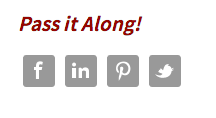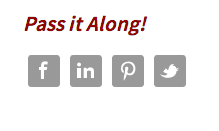Hey everybody! Well, it’s January of 2013, and that means it’s a pretty good time to stop for a moment and take stock of what we saw happen in the past year on the Web. In my opinion, the most important, relevant changes in 2012 happened in the realm of social media and social search… so let’s take a look at what we saw, shall we?
In 2012, we saw Google tweak its algorithm a few times using fuzzy animals like Penguins and Pandas to make it more difficult to abuse the system… ultimately creating more quality results in the search index. Along with these tweaks came much stricter penalties for breaking the rules at Google. In response, many webmasters who wish to remain “Whitehat” and not risk the domains they own receiving a penalty and a huge traffic drop from Google turned to alternative methods for increasing their rank in Google – which, in 2012, was mostly social media.
In mid 2012, Google introduced the ability (and many of you likely have it enabled without knowing it) to enable “Social Share” in Google. This system works to ensure result links that have been shared by your friends on Google+, Twitter, and Facebook are going to rank higher than other links–especially Google+. You might notice this when searching – if you see a small picture of a person next to your search result, that means it’s been socially suggested ahead of other links. Another way to notice this phenomena is if you log out of Google and perform the same search, you typically receive slightly different results.
What most web masters found was that this was an opportune time to increase web traffic without breaking any of Google’s rules. With the introduction of social search, the more friends/followers/likes you had on social networks and the more tweets/posts/shares you had, the more your online reach would grow; not necessarily pushing your site up in the core index, but by curving your reach within your friends/followers/likes ahead of the competition.

With that in mind, one can see how truly important it is to have social bookmarking as well as social links on the web. Thankfully, if you are using WordPress, many developers with like-minded interests have already developed wonderful plugins to help you add these features to your WordPress website quickly. For Social Links, I suggest using “Simple Social Links” (though it’s from Genesis, it will work on all major themes). This nifty little plugin will automatically add social icons with an easy interface for the most popular websites. In addition to just adding social icons, it’ll give you a few coloring tools so you can style the social icons to match your website perfectly regardless of its look.
Now that you’ve got the social links to help build your network of friends/followers/likes, you’ll want to give

your group of friends an easy way to share your content on social networks, using social bookmarks. A quick search on Google or WordPress will show you there are many solutions for Social Bookmarking–and almost all of them are rated poorly for some reason or another. Truthfully, many of them are ugly and rarely go well with the design of websites out of the box, which might be a cause for the low rating. But, I can show you one that’s simplistic and shouldn’t disrupt your theme integrity too much – ShareThis. ShareThis has a handful of options to integrate in your website, and it comes highly suggested.
Leveraging the power of social media with the above tools will help boost your presence in search engines greatly. Though you might not find yourself ranking higher in Google’s core index, you can start to watch your posts spread like teenage gossip when social sharing helps promoting your websites to as many “friend of a friends” as possible.



